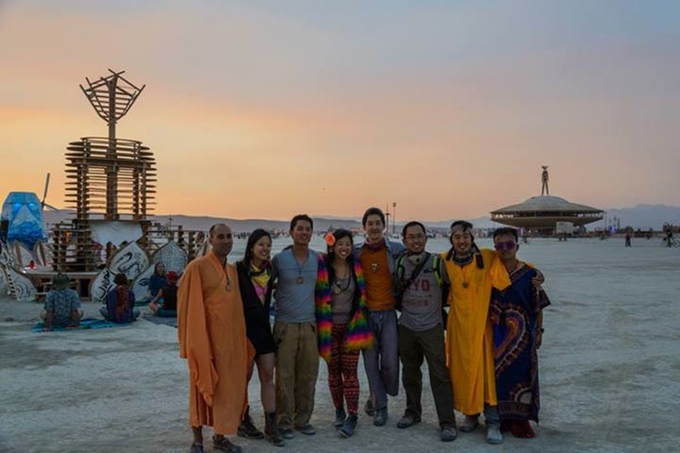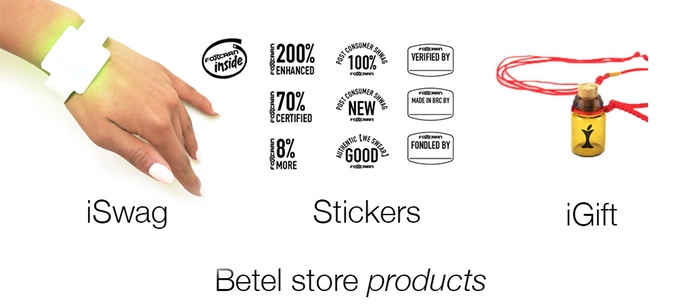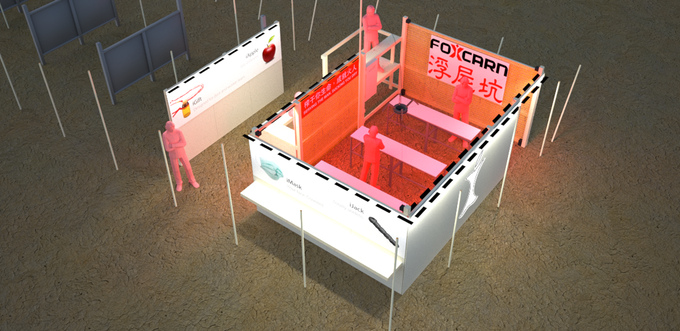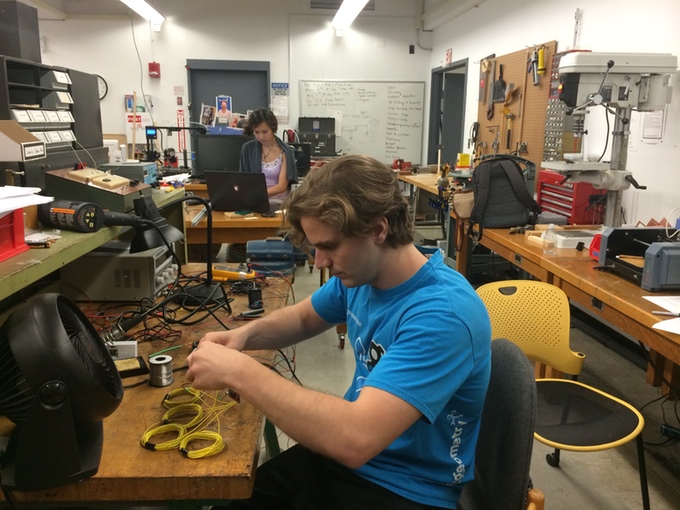FoxCarn & the Betel Store is the China and Taiwan regional project for Burning Man 2015.
The project will feature “worker” participants drawn from Burning Man attendees, who will make Apple parody products as part of an interactive art installation in which participants will experience working in an electronics factory meant to draw parallel to the real-life Foxconn, complete with a robotic overseer arm overhead.
The installation draws from both the Taiwanese-owned but China-based company Foxconn, which manufactures much of the key electronic components in Apple projects under inhumane labor conditions, as well as the Taiwanese tradition of betelnut beauties who are a common sight in the Taiwanese countryside. As described by organizers, this is meant to call attention to commodity fetishism in contemporary capitalism as well as the role of gendered labor.
[Source: New Bloom]
.

 Ian Rowen is the China Regional contact for Burning Man. He has put together and continues managing the concept and the team, and has written all of their copy.
Ian Rowen is the China Regional contact for Burning Man. He has put together and continues managing the concept and the team, and has written all of their copy.
Nathan Melenbrink is the lead architect and robot designer. He, Jiyoo Jye, and Tiffany Cheng (Taiwanese-American) are all students at the Harvard Graduate School of Design. Nathan designed the 2014 Dragon Burn effigy.
Kenny Yu, from Hong Kong, is the lead graphic designer.
Michael Huang, Taiwanese/Chinese-American, freelance designer and fire lead on Enlightenment, is co-managing.
Jen Childs and Nick Kothari, Dragon Burn organizers based in Shanghai, are leading up China-side sourcing along with Elaine Kang. They are also providing additional design help.
DJ Furth, Beijing-based filmmaker, cut their Kickstarter video.
Jimi Moe, Spring Scream co-founder and member of the Taiwan Temple Market last year, is helping with materials production.
Ty Chen, founder of dance troupe Luxy Boyz, will choreograph the “product launch” on Tuesday night, during which Ian Rowen will don a turtleneck and wire rim glasses for the launch of: iSwag: their most personal swag yet. Tagline: “This changes nothing!”

Ian Rowen, the producer of this project, recently gave an interview about the project to Taiwanese Columbia University student Brian Hioe in New Bloom magazine:
IR: FoxCarn shows how Taiwan is implicated in China’s economy as investor, manager, and mediator between the Chinese party-state land masters, Chinese labor, and global capital. The design of the space, with the FoxCarn factory and the adjacent Betel Store, also in some ways reflects cross-Strait economic geography. In general, the piece takes aim at commodity fetishism and capitalism more broadly, and is meant to give participants a visceral reminder that their objects of desire don’t materialize from thin air, without real human and environmental costs. In this way, we intend to playfully “unalienate labor”.
BH: I also want to ask about the aspect of the betelnut beauties. This is something distinctively Taiwanese and isn’t something which has any direct relation to FoxConn that you’ve incorporated into FoxCarn. What is the role of the betelnut beauties in regards to FoxCarn?
IR: FoxCarn is the production side of our project, while the Betel Store is the sales and marketing side. The Betel Store satirizes Apple, and adds a uniquely Taiwanese sense of place that highlights the erotic imaginaries that drive so much of consumer product marketing. Instead of the Apple Store’s “genius” salesperson, our sales staff, male, female or otherwise, will be a “beauty”. By, if you will, “decommodifying” the oft-fetishized betelnut beauty, our project also plays with desire as a motive force of capitalism, not just in the sales of stuff, but in the deployment of the human body. So we’ll swank up our otherwise sleekly minimal Betel Store with gaudy pink lighting, and our staff will wear provocative Taiwanese/Chinese uniforms, including Betel-branded dudou.
IR: FoxCarn & the Betel Store are in a premier, highly-trafficked set of tents located right at the base of the Burning Man, the center of the whole event. The Man Base is meant to manifest the year’s art theme, and in recent years has also been a showcase for the globalization of the event’s culture. This year the theme is Carnival of Mirrors, so they’ll be sent up like a Carnival Midway, hence our name, FoxCarn. Burning Man is a big place—with 70,000 people and thousands of projects, there’s too much for one person to see. But pretty much everyone makes it to the Man Base, so this is a perfect spot to interact with the very wide variety of creative and influential people that compose the city’s population. Given Burning Man’s increasingly broad impact beyond its temporary urban confines—and with most major press organs in attendance—we also look forward to our message, and our “goods,” spreading far and wide. We’re also building our online presence and community. Of course, supporting our Kickstarter is a great place to start.
 Last year, with Caravansary and the Silk Road, the theme was commerce and trade. We had a souk at the Man base, a market place selling (ironic) timeshares and whatnot. This year, in the carnival, it looks like we have ironic retail stores again (and ironic Commodification Camps). We get some subliminal messaging about our robot overlords thrown in, buzzing over our heads while we enjoying playing rubes at the carny.
Last year, with Caravansary and the Silk Road, the theme was commerce and trade. We had a souk at the Man base, a market place selling (ironic) timeshares and whatnot. This year, in the carnival, it looks like we have ironic retail stores again (and ironic Commodification Camps). We get some subliminal messaging about our robot overlords thrown in, buzzing over our heads while we enjoying playing rubes at the carny.First we had the iPhone on the Playa, now we have an Apple Store and iPhone factory. This comes after previous Burning Man advertising ironic looks at commodity fetishism:
Some of these were pretty funny. Some of them fell flat. It’s a fine line – let’s hope that Foxcarn and the Betel Store falls more on the funny side than the thinly veiled commercial promotion side.
Ultimately, psychologically, the thing that you are mimicking and emulating is the thing that you are promoting. The irony helps make these mainstream brands more palatable to those who might otherwise be offended by them. As They say, “there’s no such thing as bad publicity”. And as They also say “sex sells”. It doesn’t matter whether money changes hands: you are being sold this commodity fetishized lifestyle at this art project that supposedly parodies it.
For anyone interested in exactly how subtle and psychological modern marketing can be, I highly recommend Douglas Rushkoff’s book Coercion: Why We Listen To What “They” Say. It was published in 2000, before social media, smart phones, and Big Data, but everything described is still part of the system and working better than ever.

























 Described as a “community-driven art, innovation, science, and technology festival,” the second annual Berkeley Spark will happen in Civic Center Park (Martin Luther King Jr. Way between Center Street and Allston Way) this Saturday. It will feature a market with items that those going to Burning Man may need on the playa, interactive art sculptures, Burning Man theme camps, workshops, food, a beer and wine garden, and a hip-hop open mic, a musical performance by Laura Inserra from the multidisciplinary performing art and music organization Samavesha.
Described as a “community-driven art, innovation, science, and technology festival,” the second annual Berkeley Spark will happen in Civic Center Park (Martin Luther King Jr. Way between Center Street and Allston Way) this Saturday. It will feature a market with items that those going to Burning Man may need on the playa, interactive art sculptures, Burning Man theme camps, workshops, food, a beer and wine garden, and a hip-hop open mic, a musical performance by Laura Inserra from the multidisciplinary performing art and music organization Samavesha.



